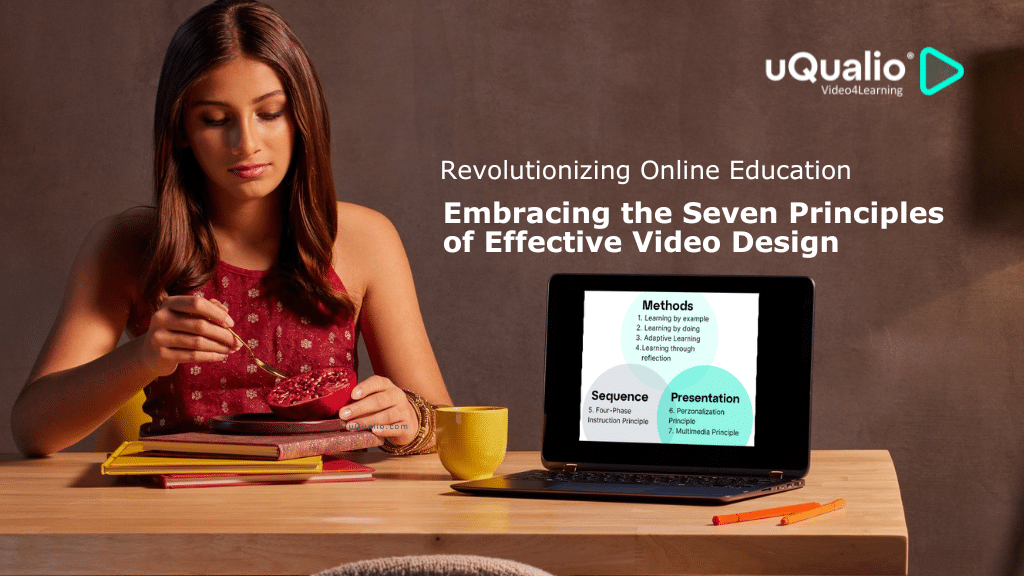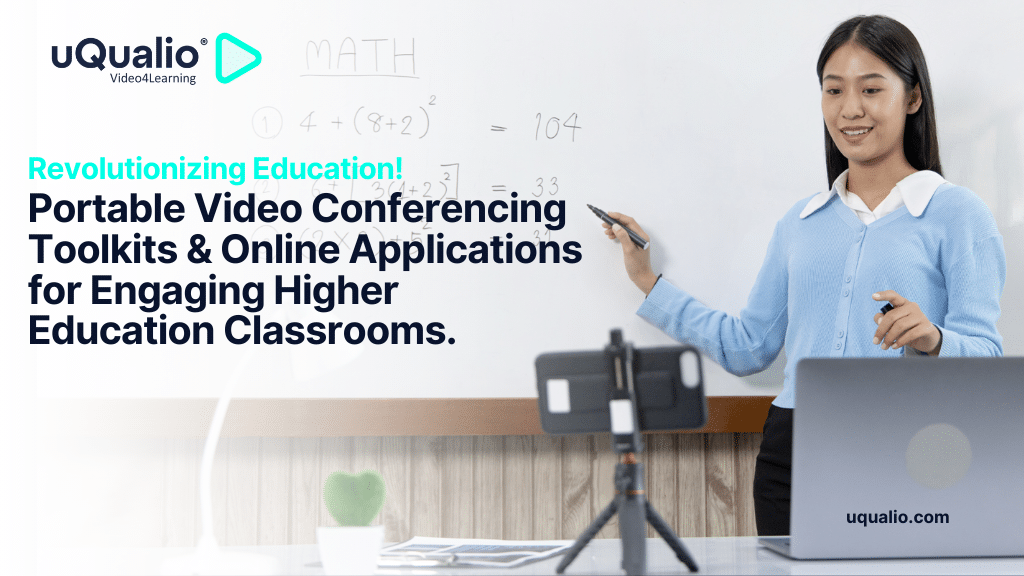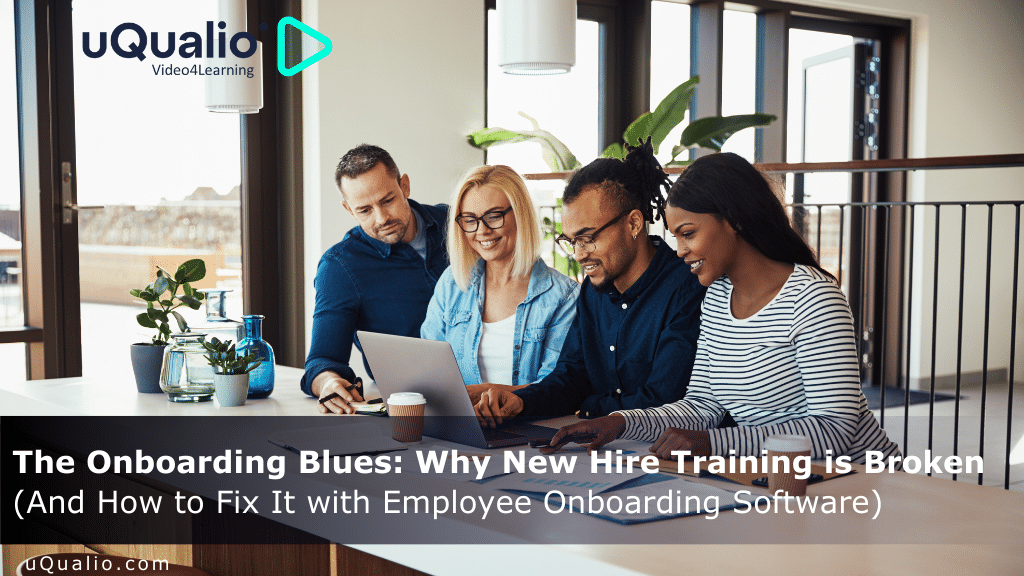Follow the advice of the lean development movement and get everything in front of actual learners as early as possible and identify points of confusion before you spend money on developing materials in any eLearning course creation software! uQualio Video4Learning is thankful for the opportunity to speak with Christopher Bergeron about his very interesting work as in instructional design.
Today we’re going to chat with Christopher about the intersection where instructional design and online learning meet. But enough preambles, let’s jump right into it!
First, thanks for joining us today Chris to talk about your experience in the instructional design space. What is it about instructional design that grabbed your attention and made you want to focus on helping people with this specific part of their teaching strategy?
I think that I backed into the instructional design from of love of education and a love of creating educational media. Once I learned that instructional designers worked with subject matter experts to build courses and media on topics that they weren’t an expert in it really got my attention as a way to continually learn about a wide variety of topics. So selfishly I get to learn from great experts and helping others be the hero in their adventures is quite addicting.
I listened to your podcast on TPACK and found it really inspiring. Can you break down what TPACK is for our blog readers?
“The TPACK model is extremely valuable for Instructional Designers. It offers an excellent way to articulate what we bring to the table regarding education and training. And it can help shed some light on how the role of the ID can shift in different circumstances.”
“The TPACK model represents a Venn diagram of Technology knowledge, Pedagogical knowledge, And Content Knowledge.”
“The magic, of course, is in the overlap. So it’s not enough to know about technology and the content someone needs to understand how technology applies to the content area. It’s not enough to understand pedagogy and the content one needs to understand how pedagogy can be leveraged to teach the specific content, and again with technology and pedagogy. Understanding how the technology works but not being able to apply it to help students learn is of little value. And so this is where having the right combination can be tremendously helpful since you don’t need to understand everything yourself but can build a team to cover all of the elements.”
Corporate training as an HR training specialist. Let’s say this person is a subject matter expert on the topic of Employee Experience (EX) but has little in the way of pedagogical knowledge. Imagine this person is putting their first online course together on the topic of EX using our video eLearning platform. What are the most common pedagogical mistakes that you see people who fall into this category make? How would you suggest that they fix those mistakes and approach instructional design as a non professionally trained teacher?
“I find that the two most common mistakes I see are tied to alignment. Having a clear learning objective that is directly tied to an assessment that is directly supported with content that is all aligned. It’s easiest to approach creating educational content in that order to help things stay aligned. The second mistake I see isn’t really a mistake but something overlooked often.”
“Every bit of educational content should have an assessment but that rarely should be the too often used three-question quiz at the end of an e-course. Widening the definition of assessment to include everything from a silent self-reflection, through a survey done a month after the fact, to the formal testing that is needed in some situations. But in the end, the big question is what do I want the students to learn/do and how will everyone know they have what they need.”
You are also a big advocate of storytelling as a teaching tool. Again, let’s talk about how storytelling fits into the world of e-learning specifically as it relates to technical subjects. For example, many subject matter experts that use our eLearning platform teach highly technical skills.”
For example, imagine a computer programmer teaching a class in PHP, or a business owner teaching a class in unit economics. How can these instructors introduce storytelling into their online courses? Are there any great examples of teachers or courses that have been known to be traditionally ‘dry” subjects that you thought were skillfully brought to life using engaging storytelling?
“It is certainly easier to include storytelling in some subjects than others. Your previous HR example is a good one. There are several ways to incorporate storytelling into materials. The first is to have the content be the story and follow a narrative where the learner either observes things play out or even better gets to direct the story to see how things play out based on their recommendations.”
“With something like PHP a story about “The lost little <div> tag ” is probably going to be more of a distraction so for those types of topics the moments of transition and the introduction of topics can be set to a story. This is a place where being creative with assessment can be helpful. So instead of finding the six errors in the financial statement adding a scenario and having an FBI agent asked for help identifying what’s going on has the student doing the same work but can add a bit of fun without getting in the way.”

You also talk about the importance of incubation time in education. As you mention in your blog, the idea is to set aside time to allow your unconscious mind space to work on the problem at hand. Tell us a little bit more about how he is connected to EUREKA moments, and how online course developers can design incubation time into their online course structure.
“The boring way to discuss incubation time and those EUREKA moments are to use the technical terms related to “Spaced Repetition” which is how those elements can help overcome some of the retention issues related to the “forgetting curve” in a practical application it simply means that we should bring back important content at random but not too long intervals.”
“This is not the easiest thing to do in a short one-topic course so for those situations follow-up surveys, job aids, and even posters in the break room can help reinforce what students have learned and improve retention. For those developing longer courses or integrated programs, the reinforcement can be done more intentionally and topics brought back up later in the course or program.”
You mention on your blog that one of your favorite mediums for instructional design is video. Why is this?
“When done well video offers the most flexibility. You can change your mind and just publish the audio from a video. You can do the transcription and decide to go for just text. But it’s more difficult to go in the reverse. I also think it’s because I started to do most of my instructional work with video. Video also impacts people a bit differently, it’s easier to have people make an emotional connection when they are seeing human faces in a video.”
Another concept that you talk about is the importance for teachers to take classes to watch (or experience) learning in action. What are some of your biggest personal takeaways from courses you’ve recently taken online (i.e. either giving you insights into things to do, or things not to do)?
“There have been so many things I’ve learned from taking courses both online and offline. Probably the most consistent is how powerful the teacher-student connection can be at fostering student achievement. Both online and offline people do better with their work when they know and feel that there is another human being on the other side who is there for them.”
Another topic you talk about in detail is formative assessment strategies within eLearning to help educators build better courses. You talk about how online course creators can do one-on-one sessions with students, onboard a smaller number of students, or launch a full course pilot to get course feedback. The idea, as you mention, is to get your course in front of people, so that you can start capturing data about the effectiveness of your online course. What advice would you give to e-course creators who are on a smaller budget and don’t have a lot of room to make mistakes? What course assessment strategy would you suggest to educators who fall into this group?
“The smaller the budget the more important this type of assessment becomes. My recommendation would be to follow the advice of the lean development movement and get everything in front of actual learners as early as possible and identify points of confusion before the money is spent developing materials. A phrase or an analogy might seem easy to change. But, if you’re using a professional voice actor and integrating content into a video, simple changes can get expensive to do after the fact.”
“The single biggest way to build efficiency to e-learning design is having access to your learners so you can ask often as you’re building if things are easy to understand. Sitting down with even just one person in the role you are teaching for can make a world of difference.”
Thank you for taking the time to sit down with us today and sharing your experiences working in the instructional design space. If you’d like to learn more about Christopher Bergeron, you can head over to his website here.
Achieve Effective & Affordable Video Training
– uQualio is an award-winning, easy-to-use, all-in-one NextGen LMS software for any types of online video training.











